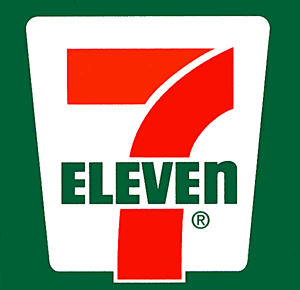
Source: 7-Eleven Inc.
At the time of Southland’s bankruptcy, 7-Eleven owned or franchised about 13,000 stores around the world, of which about 4,200 were located in Japan. At the last official count for the fiscal year ending in March of 2014, 7-Eleven owned or franchised 52,433 stores in 15 countries.
The company owns or franchises 16,319 stores in Japan and 10,642 in the United States and Canada. Here is a list of the remaining countries with total store counts:
- South Korea, 7,085
- Thailand, 7,429
- Taiwan, 4,919
- China, 2,001 (including Hong Kong, Macau and Guangdong total of 1,607)
- Mexico, 1,649
- Malaysia, 1,557
- Philippines, 1,009
- Australia, 595
- Singapore, 537
- Denmark, 196
- Sweden, 190
- Norway, 157
- Indonesia, 149
By way of comparison, McDonald’s Corp. (NYSE: MCD) owns and franchises 35,429 stores in 119 countries. 7-Eleven operates 17,000 more stores than McDonald’s in 104 fewer countries. Taiwan, which is about the one-quarter the size of Iowa, has almost 5,000 7-Eleven stores, nearly half as many as the entire United States and Canada.
The obvious questions are why so many stores and in such concentration? Here is how the company answers that question for its Japanese division:
The Seven & I Group develops stores in several formats within an area. Since each format has its own customer motivation factor and catchment area the Group can achieve a high density store-opening strategy across the different formats.
Our fundamental strategy for openings in Group companies is market concentration. This involves a high concentration of stores within one area.
This is the considerably different from the strategy that Wal-Mart Stores Inc. (NYSE: WMT) followed for years, which is to locate one massive store in a location that people can get to within a reasonable driving time.
But the Japanese strategy is quite similar to the location strategy of Starbucks Corp. (NASDAQ: SBUX), which sometimes seems to have a store on every corner of a single intersection. What Seven & I and Starbucks discovered is that concentrating the stores in a relatively small area and offering them in a variety of locales, like inside other retail stores or malls, as free-standing stores, in commuter train stations or in other high-traffic sites like hospitals, pays off by being more efficient, offering a better connection with customers and, not least, preventing entry by competitors.
McDonald’s and Starbucks have nothing on Subway sandwich shops. Privately held Subway owns or leases more than 40,000 stores worldwide and plans to add another 3,000 this year. By 2030 the chain expects to have 100,000 stores worldwide. Like 7-Eleven, the stores can be of any size that fits a given location. The company has stores as small as 300 square feet in such non-traditional locations as colleges, sports arenas and airports.
7-Eleven operates more than 52,000 stores because it has figured out a way to make serious money doing it. Notice that the stores operate in seven fewer countries now than was true in 1991. The key has been concentration of resources, which keeps costs down, profits up and competitors at bay. Seven & I plans to open a net 330 new stores in Japan in the current fiscal year. There is still a vacant street corner somewhere in the country that’s just perfect for another 7-Eleven.
ALSO READ: The Best-Selling Products of All Time
Take This Retirement Quiz To Get Matched With An Advisor Now (Sponsored)
Are you ready for retirement? Planning for retirement can be overwhelming, that’s why it could be a good idea to speak to a fiduciary financial advisor about your goals today.
Start by taking this retirement quiz right here from SmartAsset that will match you with up to 3 financial advisors that serve your area and beyond in 5 minutes. Smart Asset is now matching over 50,000 people a month.
Click here now to get started.
Thank you for reading! Have some feedback for us?
Contact the 24/7 Wall St. editorial team.



